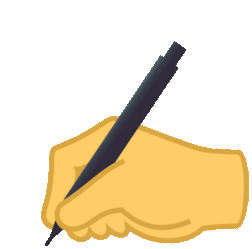By Will Braun in opinion piece for Winnipeg Free Press
Despite its role as a critical economic and moral player, Manitoba Hydro is subject to scant public scrutiny.
Hydro employs more than 5,000 Manitobans, carries over $20 billion in debt, keeps our lights on and is finishing the most costly project in Manitoba’s history. In the moral ledger, Hydro’s operations significantly and sometimes drastically affect roughly a dozen First Nations. It is a partner in what could be the two largest Indigenous business ventures ever in Manitoba.
Environmentally, it severely affects the five largest rivers in the province as well as many lakes and smaller waterways.
Despite Hydro’s stature and consequence, the media, opposition parties and civil society routinely miss key questions.
Political activity relating to Hydro — whether Progressive Conservative or New Democratic — often feels more like partisan sparring than an honest effort to improve Hydro. To that point, consider Premier Brian Pallister’s recent release of the $2.5-million Brad Wall report, and his proposed laws to reduce frequency of rate reviews and require referenda for big projects.
In light of this, below are 15 questions that someone should ask our utility:
1) What is the outlook for the $8.7-billion Keeyask dam? Many of us think it was a terrible idea, but it is going to fully operational next year, so how does its future look?
2) The Wisconsin sale that was originally supposed to justify Keeyask fell through. How much of that ground is made up by the contracts with SaskPower, recently reported to be worth $5 billion?
3) Will Minnesota-based Xcel Energy renew the 500-megawatt contract that expires in 2025? The company’s planning documents show a big dropoff in hydropower reliance in 2025, but those documents are hardly the final word.
4) Are there other buyers?
5) What prices can Hydro expect? Wind and solar are fundamentally changing the electricity sector. Natural gas remains cheap. While hydro has advantages over these sources, the downward price pressure has to be a factor.
6) When will we actually need Keeyask power in Manitoba?
When Keeyask was approved in 2014, Hydro predicted Manitoba would need power from the dam starting in about 2023. The Wall report states, “Keeyask will not be needed for the foreseeable future (likely well after 2037/38).”
Which experts to trust?
One reason for the difference is that Hydro was predicting that three proposed pipelines — including Energy East — would use 39 per cent of Keeyask output to pump oil through the province. According to Wall, a month after the province approved Keeyask, Hydro changed the 39 per cent to just 15 per cent, stranding a quarter of Keeyask’s output almost before the ink on the government rubber stamp had dried.
7) Why has Hydro not released an Integrated Financial Forecast since 2016? This document would provide financial projections that could be scrutinized.
8) Why has Hydro not released an Electric Load Forecast or Capital Expenditure Forecast since 2018?
9) What do the numbers for the $1.6-billion Wuskwatim dam and transmission line look like? Completed in 2012, early projections were dismal. An update, please.
10) What is the state of Hydro’s partnerships with First Nations? One First Nation partnered on Wuskwatim, and four on Keeyask. The Keeyask partners agreed to the dam largely in exchange for the option to buy a stake of up to 25 per cent in the dam. Since 2014, Hydro has assumed that investment will be about two per cent, in a class of shares that guarantee a return even if the dam loses money.
There has been obvious rancour in the partnership. In 2018, the Keeyask partners publicly denounced Hydro for racism and discrimination; last year they blockaded the project over Hydro’s neglect of their COVID concerns.
Notably, Pallister is also proposing legislation that would largely prevent such protests.
11) How much are these First Nations projected to receive from the dam?
12) When Greg Selinger was premier he spoke about the Hydro partnerships to an audience in Washington, D.C., saying, “Those partnerships yield phenomenal social licence.” What is the state of that licence?
13) Why is Hydro still operating Lake Winnipeg Regulation and Churchill River Diversion — key elements of the system — under interim licences from the 1970s?
14) What has Hydro done to reduce its impact on waterways?
15) What if First Nations flex their legal and moral muscles in the face of the province’s obviously lax and biased regulatory regime; and in the face of severe, widespread and ongoing environmental devastation; and in the face of what many see as an insulting and hypocritical claim that the hydropower produced at such a great cost to them is “clean”?
Bonus question: Hydro should be a force for reconciliation; what’s its plan?
Will our public utility please shed some light on these questions?
Will Braun has written about Hydro issues and worked with impacted First Nations for the past 20 years.

